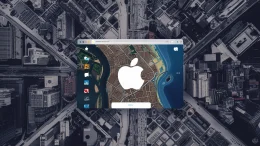Welcome to this report on the very first Tizen summit from the wonderfully sunny (if somewhat chilly) city of Beijing.
The conference started well and had pretty good attendance. Pasi Nieminen from Nomovok (who organised the event) explained how this had originally been planned as a MeeGo Summit and, rather than cancel and lose any impetus with the Asian community, Nomovok and the other sponsors had decided to go ahead anyway. This was confirmed as “the right decision” when the Tizen architecture was scheduled into the timetable for LinuxConf, Prague – the first Tizen summit would be in Asia and would be a great way to show how much Intel and Samsung thought about the Chinese open source community.
Sadly Intel and Samsung still haven’t been able to announce anything about Tizen so the conference has taken the contingency-planned form of a pre-launch and mutual introduction of the open source communities. There has been much discussion on HTML5, Qt and the balance between native apps and HTML5 apps as well as an overview of the mobile landscape – all of which are crucial to device manufacturers.
Some interesting competitive analysis focused on Android with a message that was then consistent throughout the conference – Tizen needs to deliver on the promises set out by Android: opensource and open governance.
IDC talked about the market and predicted growth in smartphones (!) and rather less obviously highlighted the comparative growth rates in various regions and increased competition in the smartphone vendor market. Their analysis on HTMl5’s entry into this market suggests a win for operators with more effort needed from device vendors and a comparatively easy ride for content owners.
Their summary concluded: “HTML5 will be a huge discontinuation with advantages and challenges – Tizen is all about HTML5”.
Now, some people may have done a double-take on seeing Qt mentioned – but yes, Qt were sponsors and had more of a presence at this first community organised Tizen event than Intel or Samsung.
This isn’t really that surprising, Tizen has let slip that EFL will be replacing Qt in the official architecture and Nomovok spotted the opportunity and decided to promote Qt on Tizen. It does make sense, the next Qt development day in Beijing will have 1000 attendees – that’s a significant talent pool – you have to wonder what a similar EFL dev-day could muster?
Panel discussions throughout talked about HTML5 vs native apps, IVI, the East/West community and the business/community relationship.
The IVI talk looked at the continuation of GenIVI with MeeGo (a point made at the Embedded Linux conf a few weeks ago) and the split between the OEM market and aftermarket – something that is felt to be quite relevant in China.
There was certainly a lot of interest in developing the east/west community relationship and some interesting points on the barriers faced by those behind the firewall – not, as you may think, a port block; more that there’s a charge to access non-chinese networks and that matters when you’re a student deciding between lunch and contributing a patch.
A point that I raised is that community is not the best word to use when approaching businesses – I’ve been thinking about an alternative and wonder if we should describe the community model more in terms of “a co-operative”? I think that sets expectations that taking part does involve actual work.
There was a healthy interest in the Mer and Nemo projects (probably because I wore the T-shirt and told everyone about it whenever I got the chance!) we even discussed a chinese equivalent of Nemo – lets wait and see.
Speaking of which… we concluded the conference by announcing a second Tizen Asia Summit in Q2 2012 – apparently the organisers will announce the dates *after* Intel and Samsung confirm Tizen is real – and guys…. the invitation is still open, you’re welcome to join the Tizen community any time you’re ready 🙂
David
Picture courtesy of Gerard Braad.
Most Popular Tech Stories
- Kelly Betting – How It Works and the Kelly Criterion Explained
- What are Pokies? – The Latest Guide to How Pokies Work in Australia
- AI industry needs annual revenues of more than the UAE’s GDP to offset costs
- Pepe Unchained Meme Token ICO Hits $2 Million – Could PEPU See a Post-Launch Surge Like PEPE?
- 4 Best Meme Coins to Buy with 100x Gains Potential – Top Picks for July 2024
Latest News
Does AI increase productivity at work? New study suggests otherwise
Artificial intelligence software reduces productivity and harms the working environment, according to a study from the freelance platform, Upwork. The findings appear to question how AI is being deployed at...

















